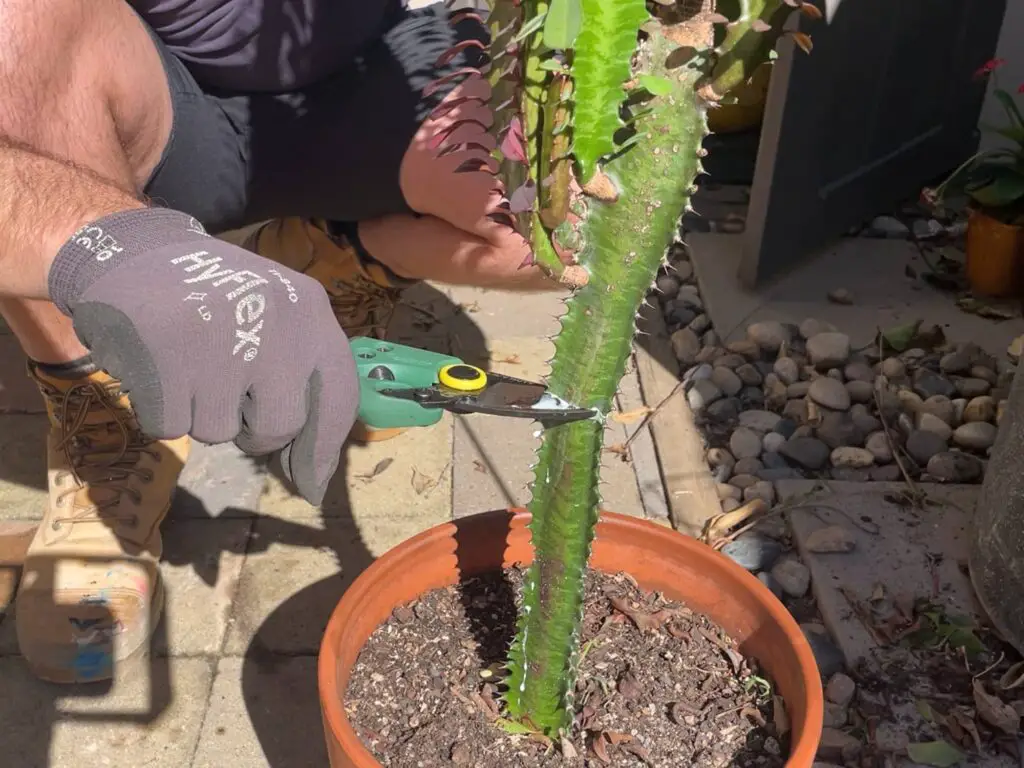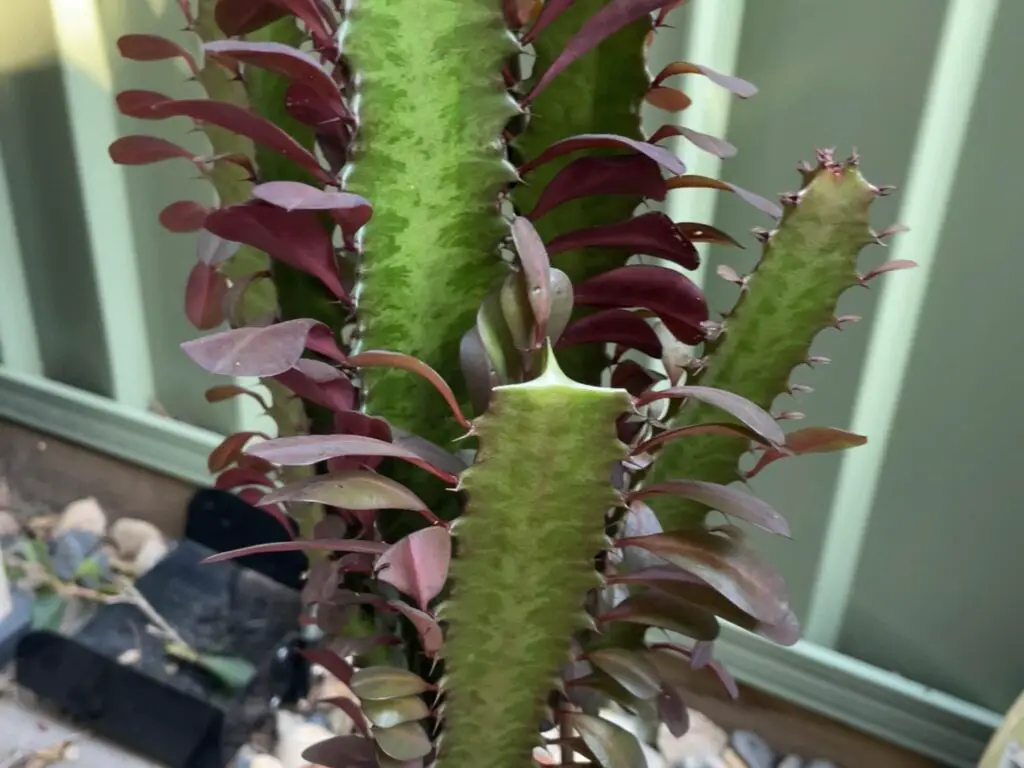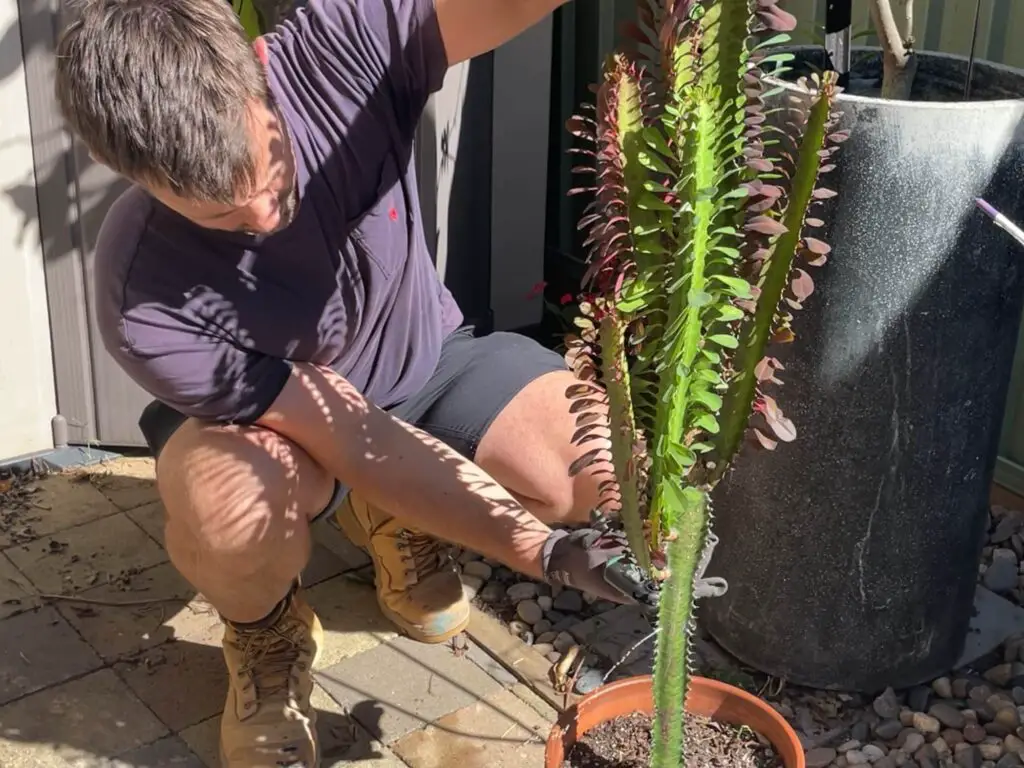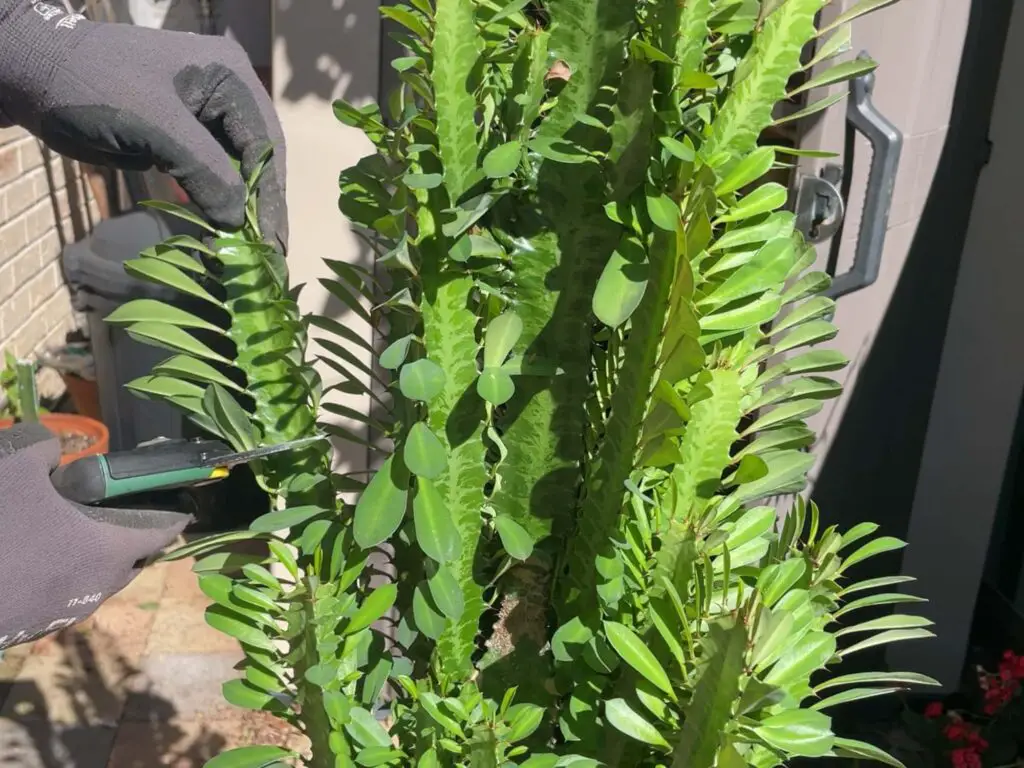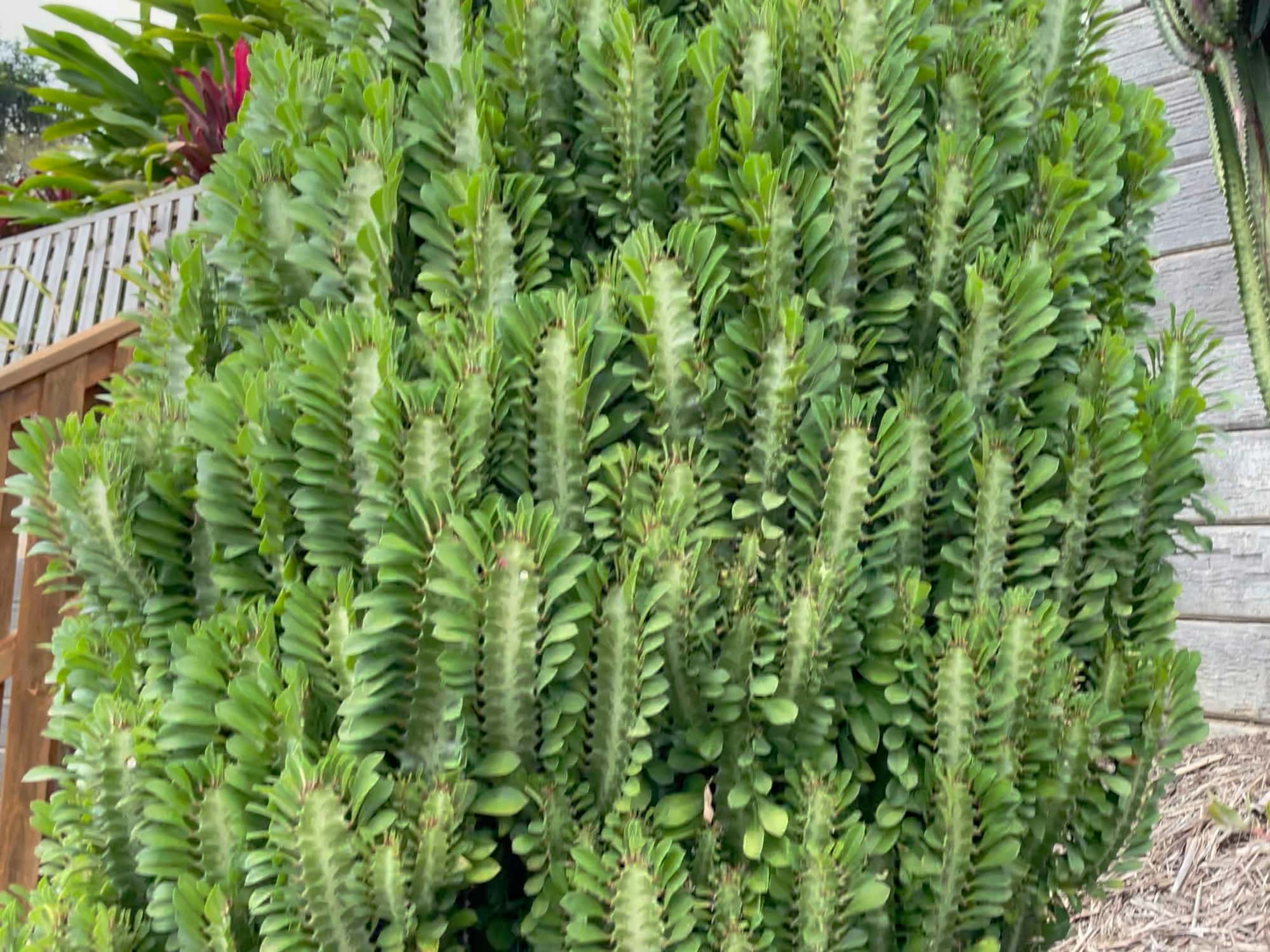If you are growing an African milk tree, but it isn’t growing new branches, but just getting taller and taller, then read this blog for some tips on how to encourage your African milk tree to grow some new branches. To save you time, the way to encourage new branches to grow are:
- Prune the plant.
- Provide optimal growing conditions.
- Start again by propagating your plant with a cutting.
African milk trees look great when they grow lots of branches and look bushy. Read on below for some tips and advice based on my experience growing African milk trees.
How to Encourage Extra Branches to Grow
Having a bushy and full African milk tree is a great look both indoors and outdoors. Here are a few tips that will help encourage your plant to branch out.
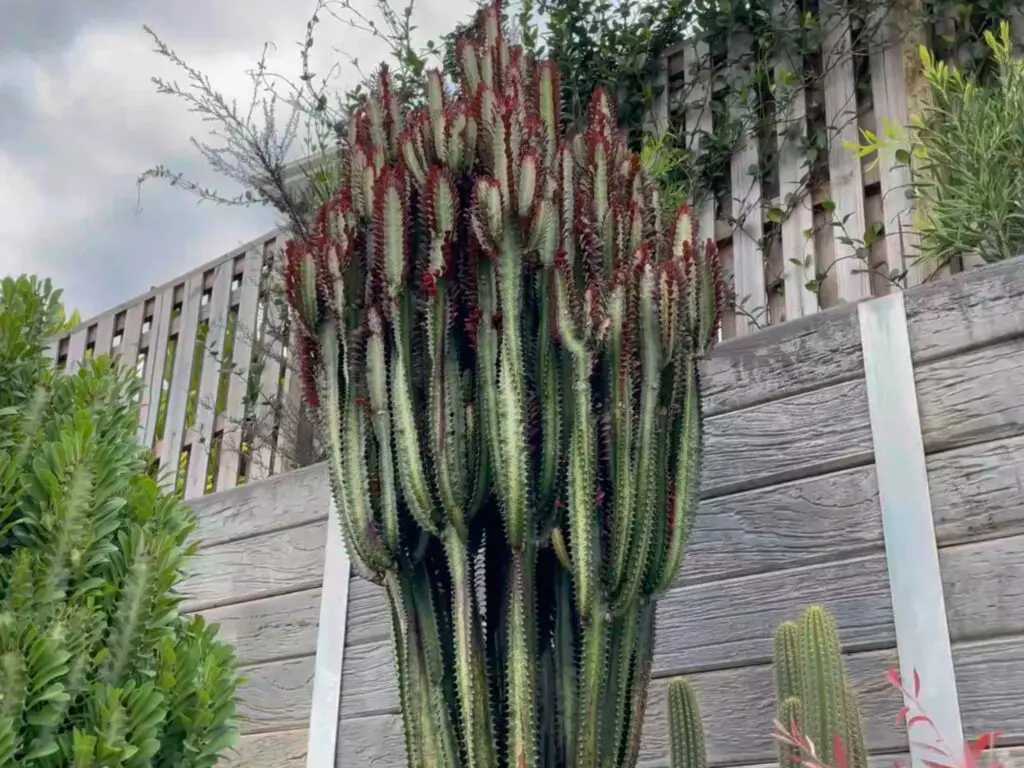
Prune the Plant
Pruning your African milk tree is the easiest way to encourage extra branches to grow.
To prune your plant, using a sharp knife or secateurs, cut part of the stem or branch to encourage new growth. You can also cut the stem at a 45-degree angle, this will:
- Help water to run off the surface of the cut, reducing the chance of rot.
- Allows more air to circulate between the branches.
- Exposes the branch to more sunlight which can help increase the chance of new growth.
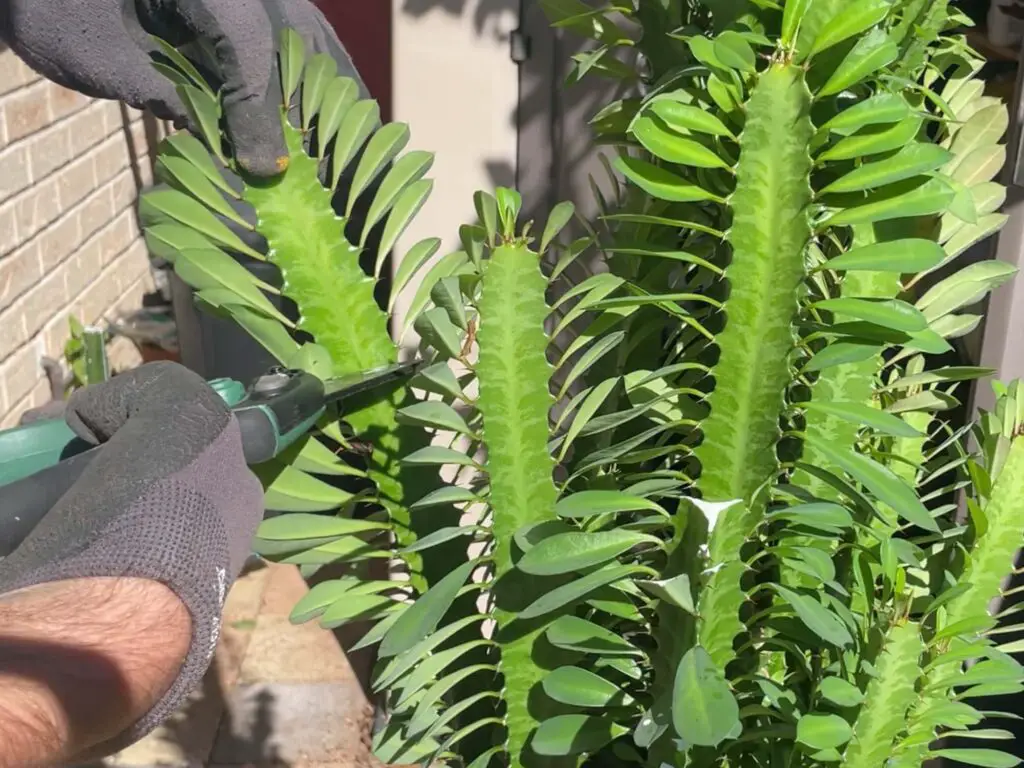
Click here to read my full guide to pruning African milk trees.
Provide Optimal Growing Conditions
If your African milk tree isn’t growing new branches it may be because it is missing something from its environment. Things that you need to consider are:
- Is it receiving at least 6 hours of direct sunlight each day? If no, move it to a spot where it will receive enough direct sunlight.
- Is it being either overwatered or underwatered? Check the dampness of the soil around 1 to 2 inches deep before watering the plant. Wait for the soil to be dry before watering it.
- Has it been a long time since the soil has been replaced or it has been fertilized?
The ideal time to fertilize the African milk tree plant is at the start of the growing season, which is when the temperature starts to warm up. You can use a store brought specialty succulent fertilizer.
With optimal growing conditions, you should have a very healthy and happy plant, which should encourage it to grow more branches.
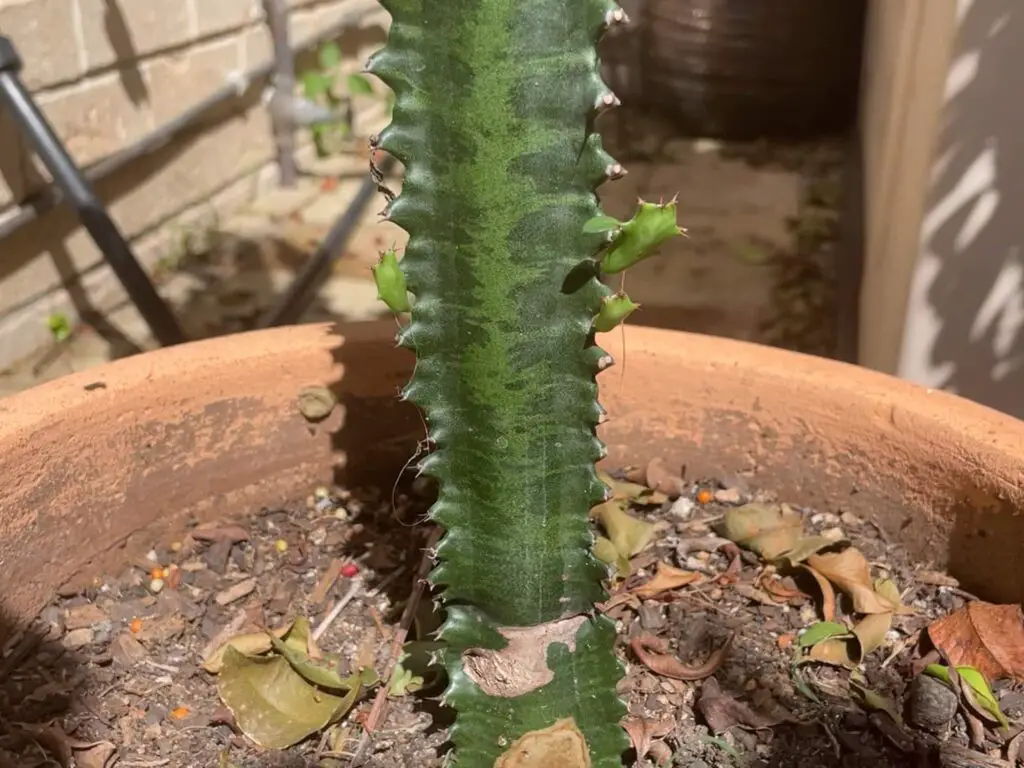
Propagation
If after you tried pruning and improving the environmental conditions, your African milk tree still does not want to grow more branches, then it might be time you start from scratch by propagating one of your branch cuttings and grow a whole new African milk tree.
These are one of the easiest plants to propagate, click here to see how to propagate your African milk tree.
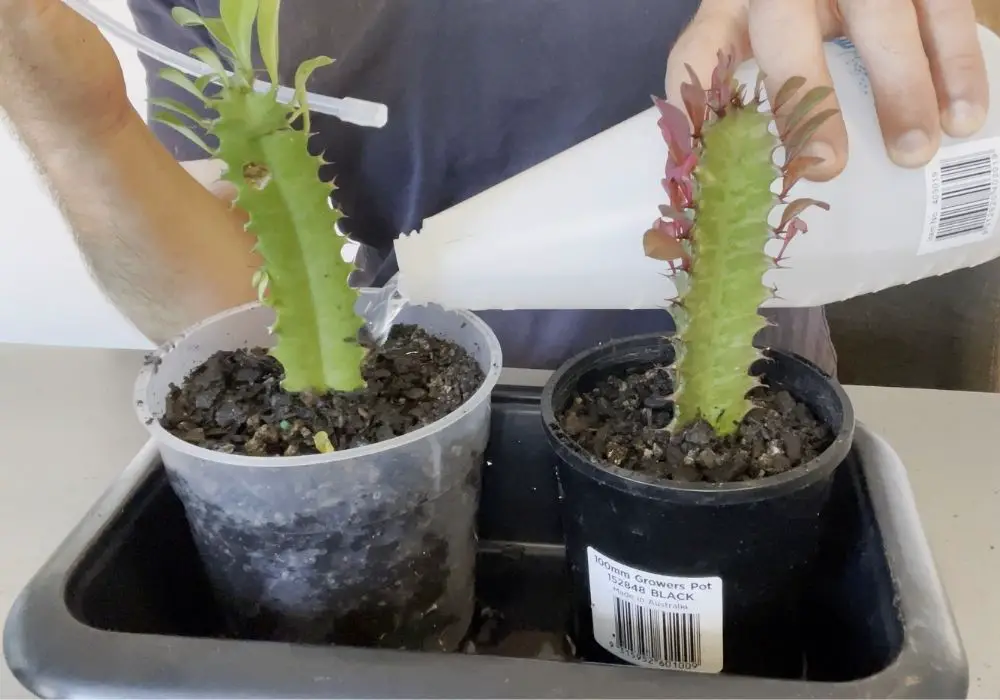
Why Isn’t My African Milk Tree Branching?
There are other reasons that you should consider if your plant is not growing lots of new branches.
Age
It can take up to one year before your plant is mature enough to grow additional branches. Try and be patient if your plant is still young, and give it some time to grow up.
Light
These plants thrive on receiving full light, if planted outside, they would happily receive full sunlight all day every day.
If you have yours in a pot, move it where your plant will receive at least 6 hours of direct sunlight.
If you have a good spot that it can receive more than 6 hours, then move it there.
The more sunlight it receives, the more optimal the growing conditions are for it to grow additional branches. But please note that it will need darkness when the sun goes down, so don’t think you can have a grow light trained at it 24/7.
Watering
African milk tree plants can be overwatered or underwatered. A sign that your plant is overwater is that it will start to lean over, and a sign that it is being underwatered is that it will start to become skinnier as it loses water and becomes hydrated.

A test you can do before you water the plant is to check the soil moisture, is to put your finger 1.5 to 2 inches into the potting mixture. When you pull it out, if there is soil sticking to your finger then there is still moisture in the soil. If no soil sticks to your finger then it is likely dry and ready for a good watering.
You do not want to overwater your plant as it may also develop root rot.
Fertilizer
African milk trees should be fertilized at the beginning of the growing season. Do not fertilize during the dormant months during winter, when it will not be doing any growing.
Pruning
Part of keeping your plant healthy is to ensure no diseases are infecting your plant. If you see any sickness in any branches, your best course of action is to first remove the infected branches. If your plant has any diseases affecting it, it will not be encouraged to grow any extra branches.
